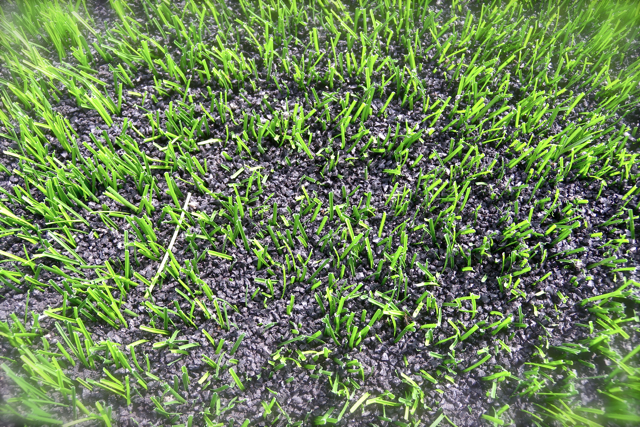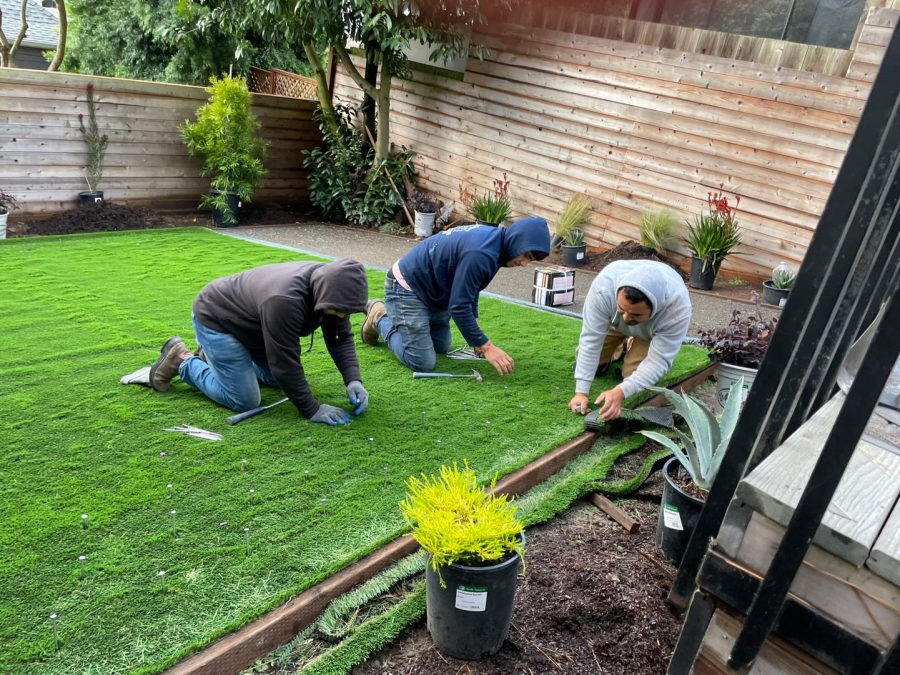Enhance Your Outdoor Space with Arizona Artificial Turf for a Vibrant Green Look
Enhance Your Outdoor Space with Arizona Artificial Turf for a Vibrant Green Look
Blog Article
Delve Into the Environmental Benefits of Opting for Artificial Turf Solutions
The fostering of fabricated grass remedies provides an engaging chance to resolve pushing ecological challenges. By dramatically reducing water use and lessening the application of damaging chemicals, these alternatives not just promote lasting landscape design but likewise secure local ecosystems. Furthermore, the lower carbon impact related to lowered maintenance tasks contributes to an extra sustainable technique to land monitoring. However, the ramifications of these benefits prolong past mere preservation efforts, increasing inquiries regarding their lasting influence on environment conservation and general eco-friendly balance. Discovering these dimensions discloses a complex interplay worth taking into consideration.
Water Preservation Advantages
One of the most considerable advantages of synthetic grass is its capability to conserve water. Typical grass lawns call for significant watering, particularly in locations susceptible to drought or water restrictions. In comparison, synthetic grass does not require watering, substantially minimizing the total need for water resources. This feature is particularly beneficial in deserts where water scarcity is a pushing concern.
By removing the requirement for normal watering, fabricated turf contributes to lasting landscape practices and assists alleviate the ecological influence of too much water intake. The conservation of water expands to the decrease of overflow, which can lead to dirt erosion and waterway contamination.
In addition, the setup of synthetic grass enables homeowners and towns to allot water sources more effectively, concentrating on essential uses such as drinking water and agriculture. The change in the direction of synthetic grass not only advertises responsible water usage but likewise straightens with more comprehensive ecological objectives focused on protecting natural resources.
As neighborhoods significantly prioritize sustainability, the water conservation benefits of man-made lawn offer an engaging case for its adoption in industrial and household landscape design jobs.
Lowered Chemical Use
The shift to synthetic grass significantly decreases the dependence on chemical treatments commonly made use of in all-natural yard maintenance. Traditional grass monitoring usually involves the application of plant foods, pesticides, and herbicides to promote development and control bugs. These chemicals can present dangers to human health, local wild animals, and the setting, adding to soil and water contamination.
On the other hand, synthetic grass gets rid of the requirement for these hazardous substances. As soon as mounted, it needs minimal maintenance, mostly consisting of routine cleaning and occasional infill replenishment. This reduction in chemical usage not just benefits the prompt atmosphere but also adds to wider ecological security. By minimizing the launch of synthetic substances into the ecological community, artificial grass promotes much healthier soil and water systems.
In addition, the absence of chemical overflow linked with man-made lawn setups aids protect regional waterways from air pollution, sustaining aquatic life and keeping biodiversity. Arizona artificial turf. As neighborhoods significantly focus on sustainable techniques, choosing artificial grass offers a feasible solution that lines up with ecological preservation objectives. Through this change, homeowner can appreciate lush eco-friendly areas without endangering eco-friendly health, leading the way for a much more lasting future
Reduced Carbon Impact

Furthermore, the setup of synthetic grass can result in considerable water preservation. All-natural lawns require significant amounts of water for watering, which not just includes in the carbon impact related to water removal and therapy but also strains regional water resources. On the other hand, synthetic grass find requires very little maintenance, needing no watering, consequently significantly reducing water use and its linked energy prices.
Additionally, the longevity of fabricated lawn adds to its lower carbon effect. With a life expectancy of as much as 15 years or more, visit this site right here the demand for constant substitutes is diminished, leading to much less waste and reduced power usage in manufacturing and dealing with conventional yard choices. On the whole, man-made grass provides a sustainable alternative for eco mindful landscaping.
Habitat Conservation
Environment preservation is a critical factor to consider in the discussion over landscape design choices, specifically when comparing artificial grass to natural turf. All-natural lawn yards typically require extensive upkeep, consisting of using pesticides, fertilizers, and herbicides, which can detrimentally affect local communities. These chemicals can leach right into the soil and rivers, harming indigenous flora and animals and interrupting neighborhood habitats.
Artificial grass gets rid of the requirement for harmful chemicals, therefore shielding nearby wildlife and maintaining the integrity of surrounding environments. The setup of man-made lawn can lead to the conversion of previous yard locations right into even more biodiverse landscapes, such as pollinator yards or indigenous plant areas, which can support local wildlife.
Ultimately, the transition to artificial lawn not just saves water and minimizes maintenance efforts but also cultivates an extra unified connection between human activities and the all-natural setting, advertising habitat conservation while doing so.
Long-Term Sustainability
Long-lasting sustainability is an essential aspect in assessing the advantages of synthetic grass over standard grass yards. Among the most significant advantages of synthetic grass is its sturdiness; it can last as much as 15-20 years with marginal upkeep, whereas natural yard needs frequent reseeding and substitute. This durability reduces the demand for continuous resources, go now such as water, plant foods, and pesticides, which are crucial for maintaining a healthy turf yard.
Furthermore, synthetic grass adds to a decrease in carbon emissions connected with lawn treatment equipment. Traditional grass usually need gas-powered mowers, leaners, and blowers, every one of which add to air pollution. Artificial turf companies phoenix. In contrast, synthetic grass gets rid of the need for such equipment, promoting a cleaner environment
Moreover, the production of synthetic grass progressively uses recycled products, enhancing its sustainability account. As suppliers adopt green methods, the environmental impact of fabricated grass remains to reduce.

Final Thought
The fostering of synthetic grass solutions provides significant ecological benefits, including considerable water preservation, reduced reliance on dangerous chemicals, and a lower carbon footprint. Additionally, synthetic grass aids in protecting natural habitats by reducing land disruption and advertising long-term sustainability through the usage of durable products. Jointly, these factors emphasize the potential of synthetic lawn to add positively to environmental wellness and offer a feasible choice to traditional landscaping methods in an increasingly resource-conscious world.
In contrast, man-made lawn does not require watering, considerably minimizing the total need for water sources. By minimizing the release of synthetic substances right into the ecological community, artificial turf promotes healthier soil and water systems.
Moreover, the setup of fabricated turf can result in significant water preservation. In comparison, synthetic grass requires minimal upkeep, calling for no watering, therefore significantly minimizing water use and its connected energy expenses.

Report this page